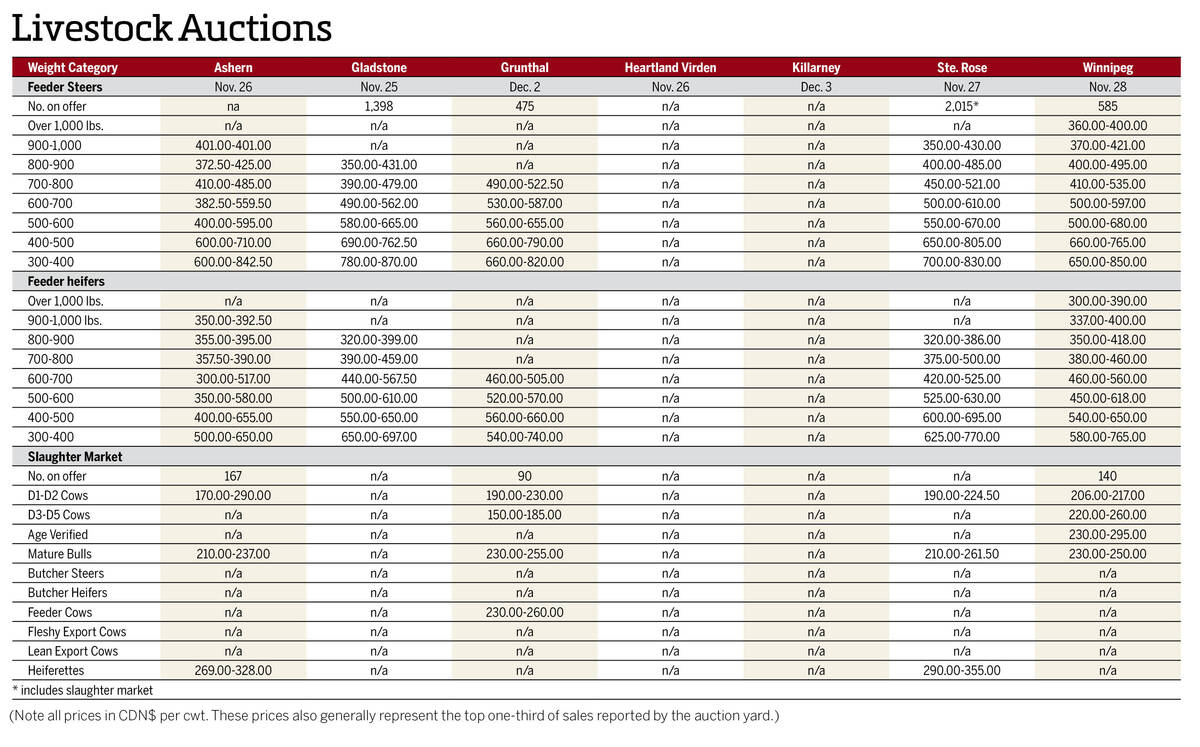Cattle auction yards were still busy across Manitoba during the last week of November, although the fall run is starting to slow down as the holiday season approaches.
“We saw volumes a little bit lower than the previous week, and that will be the trend until the end of the selling season,” said Rick Wright, of Heartland Order Buying.
“Prices were strong across the board on all the cattle that were carrying good health, especially the cattle that were under the 550-pound mark,” said Wright.
Read Also

Manitoba cattle prices, Dec. 3
Cattle prices from Manitoba’s major livestock auction marts during the week Nov. 25-Dec. 2, 2025.
He expected the declining volumes would keep prices well supported for what was moving into the new year.
Transportation was less of an issue than it was at the height of the fall run. Wright said most of the feeder cattle were staying in Canada, with backgrounding lots in Manitoba major buyers over the past week.
“The feedlots in Manitoba were a month to six weeks late being able to take cattle, because of the wet conditions and poor pen shape,” said Wright. With the harvest finished and the ground firming up, “they’re ready to take some calves again.”
Pens that would have normally been filled by now are still looking for cattle, which helped underpin prices, according to Wright.
“It’s been a busy fall in terms of placements,” said analyst Anne Wasko of Gateway Livestock Exchange in Alberta. She noted that the latest cattle-on-feed numbers showed big placements in Western Canada in October, with that trend expected to continue in the November data.
“When the dust settles, (feeder cattle) prices on average over the last 60 days will be awfully similar to where we were last year,” said Wasko.
The fat cattle market is also seeing some strength. The Tyson plant in Kansas that was closed due to a fire in August is reopening a month ahead of schedule, which Wasko said was underpinning prices and bringing some normalcy back to the market. Prior to the fire, the plant handled 5,500 to 6,000 head per day.
“It’s been a $20 recovery since the low in August,” said Wasko on the gains in the fat cattle market.
Looking at cull cows, “there are a lot more cows for sale this fall than we saw last fall,” according to Wright.
The feed situation across the province is very regional. “Where they’re short on roughage, they’re really short on roughage,” said Wright adding, “there’s lots of feed grain around, but feed grain is no good to feed cows – you need hay.”
As a result, many producers are culling cows they normally would have held on to a little longer, while others are getting out of the business completely.
















